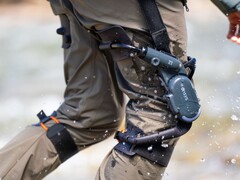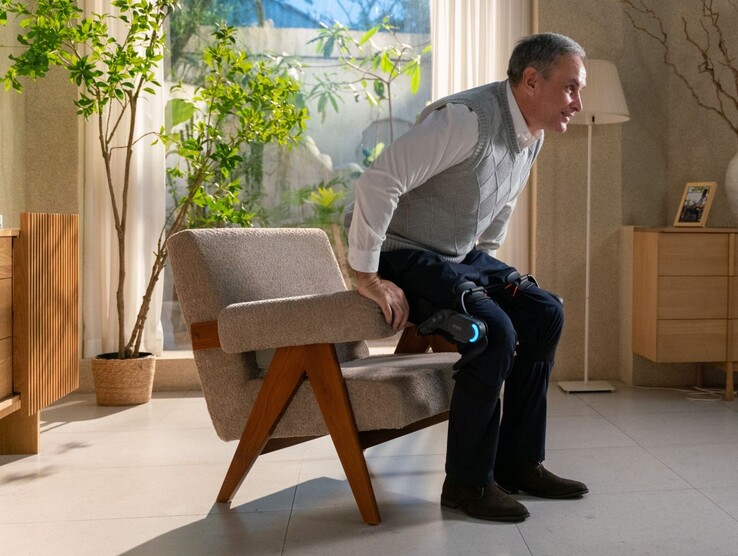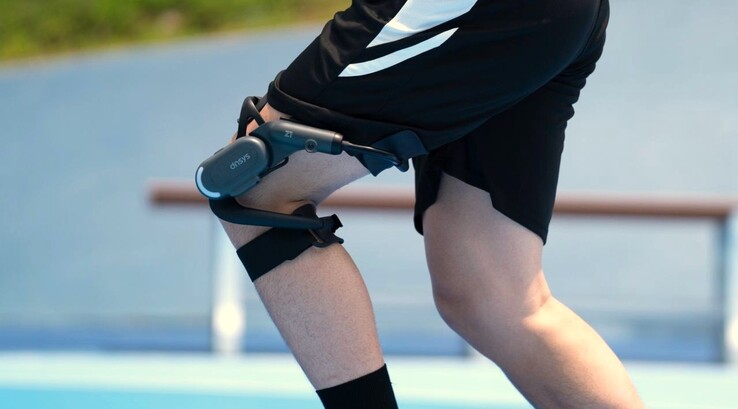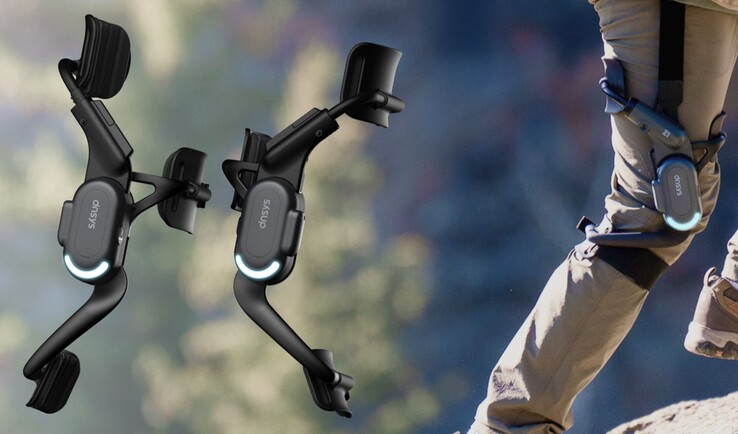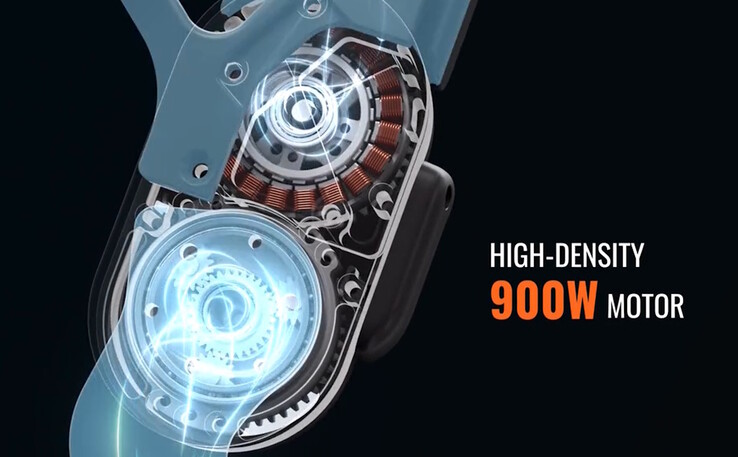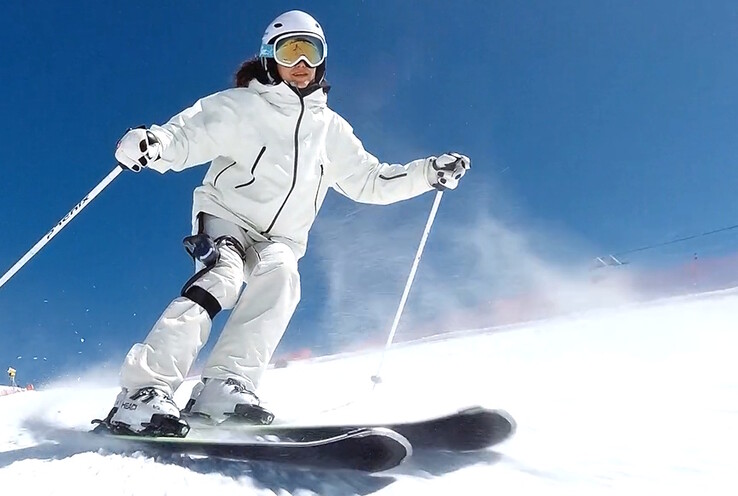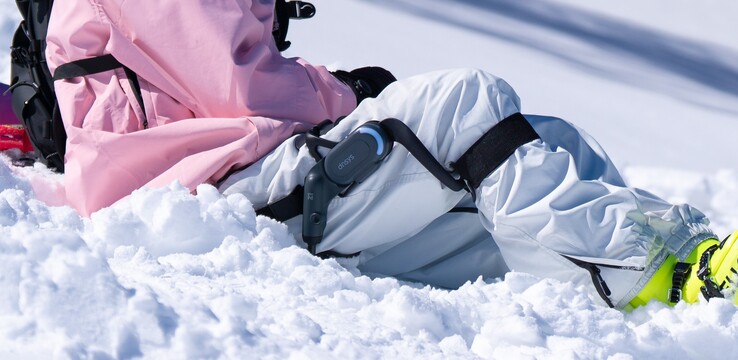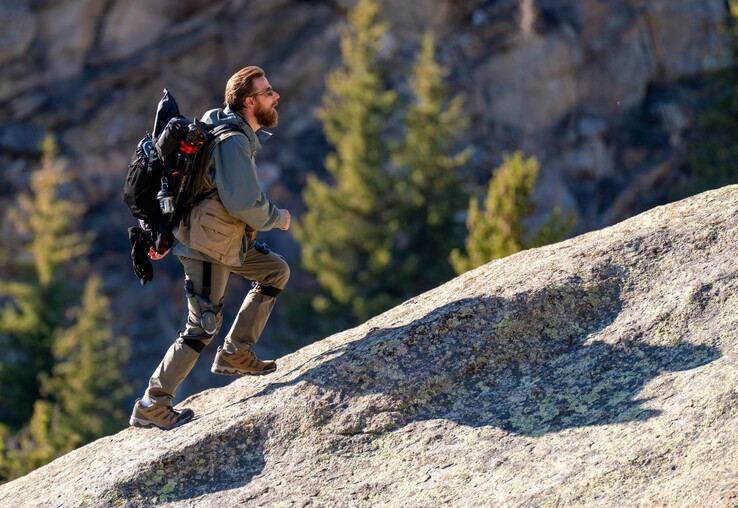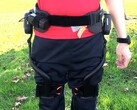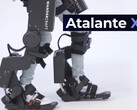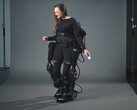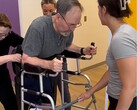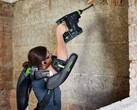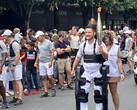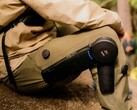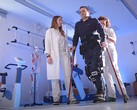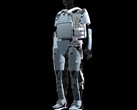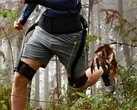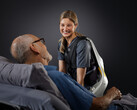Introduction
Dnsys has launched a Kickstarter campaign for its Z1 knee exoskeleton, which is strapped to the upper thigh and lower calf to provide a mobility boost for everyday consumers while walking, hiking, and playing sports. The exoskeleton can be used in the rain and snow thanks to its waterproof design. The company states the Z1 has undergone three years of R&D, with motion data gathered over 1,500 hours to refine the AI Neutral Motion Engine controlling it.
Notebookcheck had the opportunity to interview co-founder Jojo Li and head of marketing Nick Tang (quotes lightly edited for brevity and grammar).
Jojo noted her company's goal was to produce an affordable model with a price similar to a new smartphone. This was achieved by using its skilled manufacturing team in Shenzhen, a city in China known for its high-tech production prowess, and top algorithm developers in Beijing coupled with a custom-designed DNA-1 motor and know-how from the company’s medical-grade models.
History
Dnsys is an acronym for ‘dynamic system’, which means a system that changes state over time. The founding team worked at other notable companies, including DJI, Segway, and Xiaomi, and brought with them their knowledge of making commercial and consumer products.
Jojo decided to join the startup because she thought, “It is very important to use the technology to enhance people's mobility, because every person will become old. So we will want to use technology to enhance our human bodies. We want to do something for our parents, our grandmothers.”
The company’s original Dnsys-H1 hip exoskeleton gained medical approval in China and has been used in over ten hospitals to assist hundreds of patients with their gait. This was followed by the X1 hip exoskeleton, a consumer version that does not have medical functions. Their latest Z1 exoskeleton was developed in response to customer feedback.
JoJo explained, “So the Z1 to be honest also was shaped by our users from the X1 community because when we launched the X1, a lot of users told us they want a knee exoskeleton. But we also heard this from the doctors in 2021, and a lot of doctors told us a lot of people need the knee exoskeleton. And the Z1 has launched on Kickstarter and raised $1 million in under ten days.”
While other companies such as Skip are planning to release knee exoskeletons, marketing colleague Nick noted, “Among all those competitors you can see on the market, I believe ours is the most advanced. Also, the Z1 is the only one on the market because the knee exoskeleton is more difficult to develop than the hip exoskeleton.” The Z1 is scheduled for shipment in November 2025, whereas the Skip knee exoskeleton is scheduled to launch in 2026 for five times the price. For added mobility assistance, the Z1 can be worn simultaneously with the X1, providing a coordinated hip-and-knee boost.
The Dnsys Z1 exoskeleton
The Dnsys Z1 weighs 1.5 lbs. (680 g) per leg for the standard aluminum-carbon fiber version and 1.4 lbs. (640 g) per leg for the pro titanium-carbon fiber version. Prototypes have been tested by users weighing 230 kg, according to Jojo.
The Z1’s light weight is due in part to the company’s custom DNA-1 motor design, which allows the exoskeleton to be lighter and more powerful than competitors using off-the-shelf motors. Each unit uses a motor that generates 450 watts of peak power to help bend the knee, and the strain of heavy loads is redistributed from the upper thigh around the knee to the lower leg.
The assistive torque and strain redistribution can help provide 20 kg of upward leg lift when climbing stairs or offset the pressure of a 35 kg backpack on the knees, according to Jojo. The actual amount of assistance will vary depending on an individual's physique, personal fitness, terrain, and load. The Dnsys app can be used to monitor health data, such as steps taken, and adjust settings.
To help lower costs, Dnsys shrunk the Z1 control system by conducting difficult AI training and data processing in the cloud. Jojo explains, “We make it lighter on our processor, and it can make our component a little bit cheaper. We can make our product affordable, and it also can process very quickly.” Thus, the Z1 can use an inexpensive, low-speed 240 MHz dual-core processor while still providing a reaction time of 0.01 sec.
Testers were able to play basketball, ski, and even do backflips, which are not recommended for safety, according to the pair. JoJo adds, “A lot of people said that they can feel very natural when they walk around, go downstairs, upstairs, on different terrains. It adapts to people very quickly and very well.”
The system has a runtime of up to three hours when only one leg unit is used, up to four hours for the standard dual-leg model, and up to eight hours for the pro dual-leg model, according to the company. For reference, a healthy person can typically walk a mile in 15 minutes or hike a mile in 20 to 60 minutes. The exoskeleton also supports regenerative charging while descending.
"Designed for safety"
The Z1 has built-in fall detection to automatically disengage the motors when the exoskeleton senses a fall or an unusual situation such as a backflip. This allows the user to continue moving their legs freely rather than becoming immobilized.
According to Nick, Dnsys sources its lithium batteries, which pass all safety certifications, from a top-tier manufacturer. The battery packs are mounted on a waist-worn belt, so should a safety event require its immediate removal, Nick notes, “You can take it off very quickly—in under three seconds.” The low-power processor helps the exoskeleton run cooler, and the Z1 can be used in temperatures ranging from -20 °C to 60 °C.
The exoskeleton’s body contact points have removable fabric covers that can be washed, and its IP54-rated body can be cleaned with disinfecting wipes for sanitization.
Future direction
The company is already utilizing AI tools to speed development while maintaining reasonable working hours. Jojo explains, “I think our company is different from other companies because all of us were born after 1990, so we are very good at using AI tools to make our product better.”
Unlike self-stabilized competitors, such as the Wandercraft Atalante X that allow the paralyzed to walk, Jojo hopes everyone can benefit from her exoskeletons. She adds, “Dnsys is pursuing the goal of transforming exoskeletons into power clothes that everyone actually wants to wear. We believe exoskeletons should not feel like cold machines or be complicated to wear. Instead, they should be as natural as sportswear—as comfortable and familiar as your favorite running shoes.”
Until that day arrives, readers might want to try a wearable chair (sold here on Amazon) while queuing for the latest Labubu drops.




